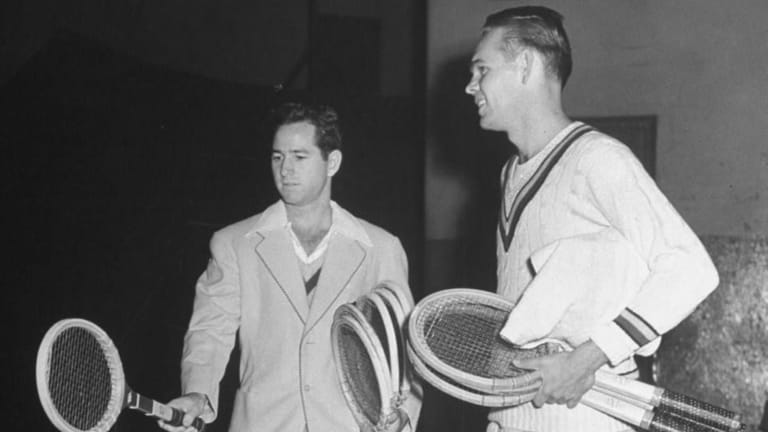The year was 1947 – the day after Christmas. The place, New York City. The occasion: the start of a new professional tennis tour, pitting veteran Bobby Riggs versus rookie pro Jack Kramer.
In 1946, just after World War II, Riggs had edged out Don Budge to become the world’s best pro. In 1947, Kramer dominated the amateur world, most notably winning Wimbledon and the U.S. Championships. The stage was now set for Riggs and Kramer to travel the world and play 89 matches across North America. The matchup was appealing. Riggs’ style was a versatile mix of defense and offense, Kramer a practitioner of state-of-the-art serve-and-volley tennis.
There was no better place to kick off the Riggs-Kramer tour than New York City and the iconic venue, Madison Square Garden. Just over 16,000 tickets had been sold. Promoter Jack Harris anticipated a gate that would top the $50,000 mark – a rarity for tennis in those years.
Then came something no one could have anticipated: an epic snowstorm, on a scale New York City had not seen since 1888. More than 25 inches of snow covered the city. All transportation – subways, buses, taxis – was shut down. Snowplows meant little. As Harris looked out the window of his hotel, he said, “No one will go out to watch a tennis match in this weather.”
On foot, Kramer, Riggs and the opening competitors, Dinny Pails and Pancho Segura, made their way crosstown from the Hotel Lexington on the east side of New York to Madison Square Garden on the west side. As the players trudged through the snow, with Riggs carrying his usual load of seven to eight racquets, Kramer said, “It was like an expedition to the South Pole.”
